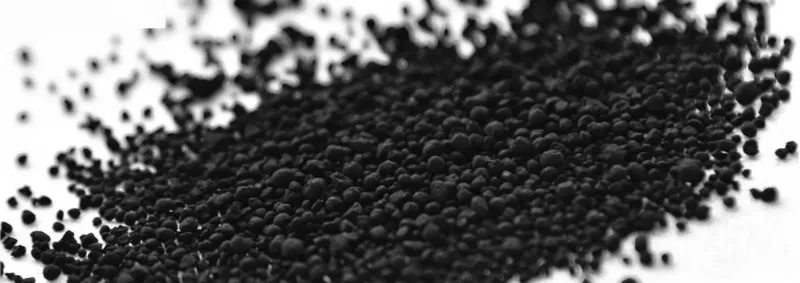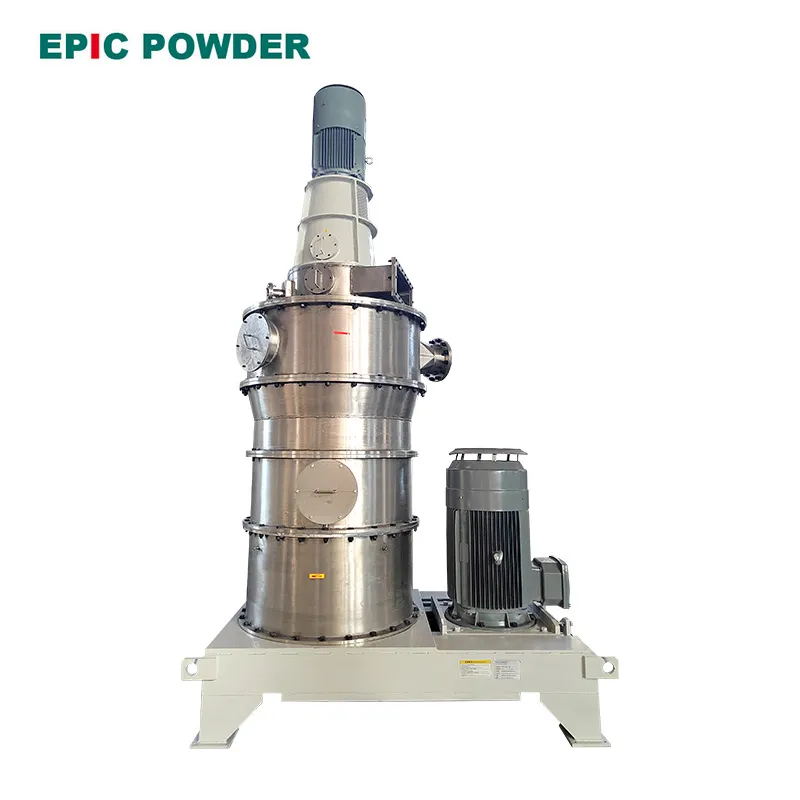Negro de carbón pirolítico (PCB) es un tipo de negro carbón Se obtiene mediante la pirólisis de materiales orgánicos como caucho y plástico de desecho. Presenta una alta superficie específica y una gran estabilidad fisicoquímica. Se utiliza ampliamente en industrias como la de neumáticos, caucho, plásticos, recubrimientos y tintas. Sirve como agente de ennegrecimiento, relleno o material conductor. Con el avance de las políticas ambientales y la demanda de una economía circular, la pirolisis... negro carbón Ha ganado una atención significativa como recurso sostenible.

Requisitos de pulverización para el negro de carbón pirolítico
El negro de carbón pirolítico generalmente tiene una gran tamaño de partícula (generalmente superior a 50 micras). Es necesario pulverizarlo a un nivel más fino para satisfacer las demandas de diversas aplicaciones. La pulverización reduce tamaño de partícula y aumenta la superficie específica. Esto mejora el rendimiento, como los efectos de relleno, la dispersión y el área de contacto.
El producto pulverizado debe mantener una alta uniformidad y estabilidad. Una molienda excesiva puede reducir su rendimiento. Una pulverización de alta calidad garantiza una distribución uniforme en el producto final, mejorando así sus propiedades físicas.
Características y Pulverización Desafíos del negro de carbón pirolítico
Como relleno importante en las industrias del caucho, el plástico y otras, la distribución del tamaño de partícula del negro de humo pirolítico (normalmente entre 10 y 100 μm) afecta directamente el rendimiento de los productos terminados. Sin embargo, el negro de humo pirolítico presenta varios desafíos:
- Alta dureza:Con una dureza Mohs de 2,5-3,5, puede provocar desgaste en el equipo.
- Tendencia a aglomerarse:Con una gran superficie específica (50–200 m²/g), es propenso a formar aglomerados secundarios.
- Sensibilidad térmica:El proceso de pulverización requiere control de temperatura (≤80°C) para evitar la oxidación.
Equipo común para la pulverización pirolítica de negro de carbón

Solución preferida:Una clasificación molino de impacto Se recomienda combinarlo con un sistema turboclasificador. Esta configuración permite lograr una distribución estrecha de D50 = 15 μm con una capacidad de producción de 2 a 5 toneladas por hora.
Molino clasificador de aire (ACM)
Un molino de impacto clasificador combina la molienda ultrafina con la clasificación dinámica. Su principio básico consiste en la rotación a alta velocidad de un rotor, que genera intensas fuerzas de impacto. Esto produce colisiones de alta frecuencia, cizallamiento y fricción dentro de la cámara de molienda. La rueda clasificadora integrada permite ajustar el tamaño de las partículas en tiempo real.
Escenarios típicos de aplicación
- Procesamiento de materiales duros: Adecuado para minerales con una dureza Mohs ≤9 (por ejemplo, carbonato de calcio, cuarzo), materiales cerámicos y químico intermedios.
- Campos de alto valor:Se utiliza en industrias que requieren distribuciones precisas de tamaño de partículas, como materiales de cátodo de baterías de litio, micronización farmacéutica y pigmentos de grado alimenticio.
- Necesidades ambientales:Trituración de bajo consumo energético para el reciclaje de residuos sólidos (por ejemplo, pulverización de vidrio usado).
Proceso de pulverización del negro de carbón pirolítico
El proceso de pulverización del negro de carbón de pirólisis consta de varios pasos:
- Cribado y pretratamiento de materiales
Antes de la pulverización, la materia prima se tamiza para eliminar impurezas grandes y partículas no aptas. El pretratamiento también puede implicar la trituración de grandes trozos de negro de humo pirolítico en fragmentos más pequeños para garantizar un procesamiento eficiente en el equipo de pulverización. - Proceso de pulverización
La etapa de pulverización es fundamental en el procesamiento del negro de humo pirolítico. La elección del equipo y los parámetros del proceso influyen en el tamaño de partícula y la calidad del producto. El equipo de pulverización adecuado se selecciona en función del tamaño de partícula deseado. Factores como la velocidad del flujo de aire, la velocidad del disco de molienda y la frecuencia de vibración se controlan durante la producción. - Clasificación y Colección
Durante el proceso de pulverización, el polvo de negro de carbón producido se clasifica utilizando equipos como clasificadores ciclónicos o clasificadores de aireLa clasificación separa las partículas de tamaño deseado y elimina las de mayor tamaño. El sistema de recolección recoge el polvo de negro de humo calificado para su envasado o posterior uso.

Desafíos y soluciones en el proceso de pulverización de negro de carbón pirolítico
Sobrepulverización
Una pulverización excesiva puede resultar en un polvo con una superficie específica demasiado grande. Esto puede afectar el rendimiento, especialmente la dispersión y la fluidez. Un sistema de clasificación puede tamizar las partículas excesivamente finas después de la pulverización para solucionar este problema.
Baja eficiencia de pulverización
La baja eficiencia de pulverización es un problema común. Para mejorarla, se debe elegir un equipo de pulverización adecuado. Se deben optimizar los parámetros del proceso, como la velocidad del molino y la velocidad del flujo de aire.
Desgaste del equipo
La alta dureza del negro de humo pirolítico provoca un desgaste significativo en los equipos. Elegir equipos resistentes al desgaste y realizar un mantenimiento regular puede reducir el desgaste y prolongar su vida útil.
Polvo épico
La pulverización del negro de humo pirolítico es un paso crítico del proceso. El tamaño y la uniformidad de las partículas son cruciales para el rendimiento del producto final. Al seleccionar el equipo de pulverización adecuado y optimizar el proceso, se puede mejorar tanto la calidad del producto como la eficiencia de la producción. Epic Powder, con más de 20 años de experiencia en el procesamiento de polvos ultrafinos, se especializa en ofrecer soluciones personalizadas de molienda y clasificación para materiales como el negro de humo pirolítico. Nuestros equipos avanzados, que incluyen clasificador de aire molinos, molinos de bolasy molinos de impacto, garantiza una pulverización eficiente y de alta calidad que cumple con los estándares de la industria. Con un enfoque en la innovación continua, Epic Powder busca apoyar a las industrias para lograr un mejor rendimiento y sostenibilidad de sus productos.
